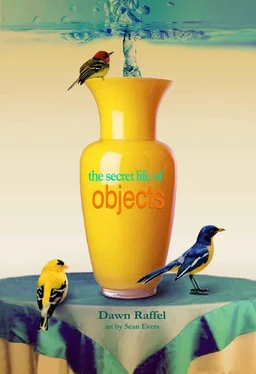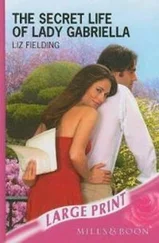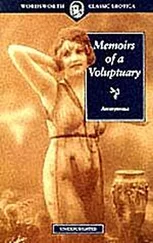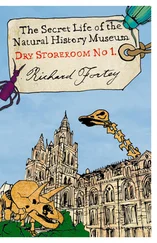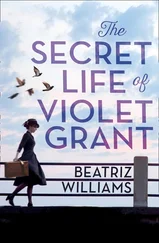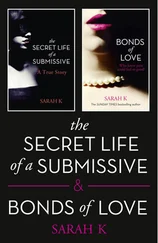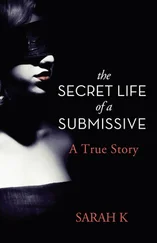By that time, the Tranqil Ease patent was bringing in enough money that my father opened a factory to manufacture the components himself. He was convinced, perhaps correctly, that when used in chairs and mattresses the motors triggered alpha waves. He advertised heavily and sold a lot of units.
When Brendan was a baby he sent us a Tranqil Ease rod for the crib. We hoped it might encourage our never-sleeping baby to sleep. Instead, the baby puked. After my father’s death, my stepmother ran the factory for awhile, then sold it to someone else. Recently, I found the rod from under Brendan’s crib. The baby is almost college-age and plans to major in physics.
Sean has developed an aptitude for acquiring small stuffed dogs — none as big as Rascal — at arcades. His hand, as he maneuvers the metal cranes and pincers — designed to grip your desired plush-toy, then lose it in the final seconds before it reaches the prize chute — is quite unerring. Again and again, he beats the odds and wins. Those pups are all over the house.

I have two of my sister’s paintings on my walls — one a beachscape that was a wedding gift and the other an enormous vermillion flower that she gave me on my fortieth birthday. I have a clay pitcher she made, that sits next to the luminous vase from my grandfather. I have the usual gifts an older sister gives a younger over the years — bracelets, earrings, blouses. And then there is a ridiculous stuffed creature that sits on the arm of the chair that I read in; she gave it to me one year on my birthday when, she said, she had run out of ideas. I think it’s supposed to be some sort of bear, although it has gossamer wings sewn on. It’s neither cute nor pretty. It stays on my chair because it is an impossible life form, a fiction, like our childhood, as my sister and I remember it.
My Grandmother Bern’s Recipes
They take forever to make. I am lazy. They are bad for you — high calorie, low fiber, high cholesterol and fat — not to mention Crisco. They wouldn’t taste the same, I am convinced, if I made them. The cakes would fail to rise. That’s not why I don’t bake them. I can’t bear to open that stained scotch plaid box of index cards on which my mother’s handwriting — loopy and blue — is fading fast.
Although my maternal great aunt B lived into her nineties, she had no idea who anybody was in her final years. (The last time I phoned her, I kept saying, “This is Dawn,” and she kept saying, “I don’t have a dog! Stop calling me!”) She had been an artist and had worked for years at Chicago’s Art Institute. At 80 she’d been shockingly beautiful, with the kind of radiance some old women have. In the end, insensate, she was very close to blind and deaf; not only did she not know who I was when I visited, I’m not convinced she knew someone was there.
“If I get like that,” my mother said repeatedly, “just shove a pillow over my face.” I believe she meant it. She was obsessed with the manner in which she would die, starting around the time she was 60. (“Just remember,” she’d say, “your father died with his shoes on.” And, “When I go, I’m going fast, so don’t be surprised.”)
When B at last expired in Chicago, my mother first protested my coming to the funeral (expensive, etc.) and then insisted on picking me up at the airport when I called to say I was on my way. Stepping into the backseat of the big sedan my stepfather drove, I was keenly aware that the days when they would pick me up at an airport were sharply numbered.
My mother had a particular idea about glamour, most of it involving Chicago’s Michigan Avenue — she never quite recovered from moving to Milwaukee when, at 20, she married my father. Chicago for her was the emerald city. Any time we needed a dress for an occasion, or simply needed an occasion to spend money, we would drive in, or take the Milwaukee Road train to Union Station, go to Saks, then walk the Miracle Mile.
The night before B’s funeral we went to dinner at the Ritz. (My mother liked the coffee shop, which had a better vantage than the dining room for people watching; in truth, she was indifferent to food but craved atmosphere. In the years between her divorce and remarriage, she led art tours from Milwaukee to Chicago, always ending at the Ritz. She married my stepfather there, in a professional discount deal.) After dinner we headed over to the twelfth-floor lobby of the Four Seasons to listen to someone play on the piano the kind of music that, if you are my age, you associate with your parents.
After the funeral, with hours to kill before they drove me to the airport, my mother and stepfather went to visit a few of the girls, now nearing 80, with whom my mother had gone to grammar school. This seemed liked a good time for me to take a walk to the nearby mall, where I spotted the ideal lamps for my living room. Instead of buying them and having them shipped, which would have made sense, I decided to go to the New York branch of the store and haul them home — roughly half my weight in lamps — on the PATH train to New Jersey. (“Is there some reason,” my mother said to me countless times, “why you feel the need to do everything the hard way?”)
That was my final trip with my mother to Chicago; she was dead within the year. My stepfather most likely was already harboring the cancer that would kill him. The lights shine in my living room.
E and I met at 23 through a mutual friend. Two years later we sealed our friendship over a long brunch during which we masticated a mutual exboyfriend, to whom each of us had been introduced in turn by our mutual now-ex-friend. E was an artist and graphic designer living in a studio in the West Village. She was also a black belt in karate, a world-class listener, and a scary-smart cookie. We used to meet at our favorite dive on Christopher Street until, during the worst of the city’s AIDS epidemic, it, along with many other West Village businesses, was ominously shuttered. Our friendship turned nomadic. E moved to a bigger place in Chelsea with huge east-facing windows; every Sunday she would walk down to Jane Street and buzz me. We would walk for miles, sometimes in the freezing cold, with no real destination. She might point out a visual grace note of the city that I’d never noticed, or stop and admire a fabric in a window. If she bought a sheet or a drape, she was acutely aware of the slightest gradation of color. Her own work, though, was black and white. She drew meticulously detailed landscapes and cityscapes — she made you understand a building’s soul.
Our Sunday walks ended when E’s mother was dying and she went upstate on weekends; before long, I left the city and had a child, then two. Still, we saw each other for great gulps of conversation — or as often as we could, given that she worked 60–70 hour weeks at a job she wanted to leave. No good deed goes unpunished: I introduced her to the career Jedi who was a contributing editor at the magazine where I worked, and she helped E find an ideal situation — in Boston.
Like everyone who leaves New York, E planned to come back often…and didn’t. I’m not great at the five-hour trek myself, and anyone will tell you I’m awful on the phone. (When I was single I rarely bothered to answer, letting it ring and ring, or, after my father bought me a machine in an act of enlightened self-interest, letting the messages pile up.) But in person we like nothing better, still, than the miles-long conversation that could take us anywhere. Walking down a sidewalk or through a park, she sees details that I miss, in nature, in design, and in my life. She sees me — and I, her — in split-screen, in middle-age (operating under the presumption that we will be hitting the century mark) and at 23. Because she is my friend, and kind, she sees me, perhaps, as I never was but wanted to be. She may see my future more clearly than I do. I like to imagine the two of us wandering into our seventies, if we are lucky, maybe catching an early bird special and a cappuccino after a brisk walk. On my wall I have the view in black and white, as she drew it, of the rooftops slanting this way and that, seen through her studio window in the Village.
Читать дальше
